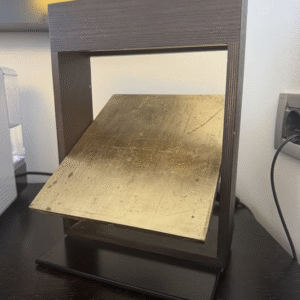A Village in Need
In a remote village plagued by hardship, one problem overshadowed all others: the lack of clean water. In summer, wells dried up, leaving families desperate for every drop. In winter, old pipes froze, useless and brittle. Children carried heavy water buckets, women rationed supplies for cooking and cleaning, and elders remembered flowing springs that no longer existed.
Years of petitions and protests finally prompted the government to act. A central water supply was approved—not from compassion, but political necessity. Still, the villagers greeted the news with cautious hope.
Dmitri and His Tractor
For the job, they hired Dmitri, a seasoned tractor driver. Weathered and patient, he knew his Soviet-era tractor inside out. The machine roared along the river, digging trenches tirelessly. Rain, wind, or cold never slowed him. Villagers occasionally brought him tea and bread, children watched in awe, and Dmitri worked silently, focused on delivering water to the community.
The Moment of Discovery
One noon, the plow struck something hard. The metallic screech jolted Dmitri forward, stalling the engine. Climbing out, he spotted a thick, rusty chain embedded deep in the soil. At first, he thought it junk. But the resistance suggested something massive lay beneath.
He hooked the chain to his tractor. Slowly, with a shuddering roar, the machine pulled. Mud flew, the earth trembled, and finally, a dark, weathered ship’s prow emerged—wood blackened but intact after centuries underground.
Unveiling History
Word spread quickly. Workers and archaeologists flocked to the site. Beneath the soil lay an entire medieval cargo ship, preserved by minerals and water. Iron fittings, wooden planks, and remnants of trade goods—pottery, coins, fabric—offered a rare glimpse into centuries-old commerce.
Dr. Elena Volkov, lead archaeologist, explained the find to villagers: the river once carried merchants’ boats, transporting goods along a vital trade route. This ship had sunk, then been buried by shifting waters and sediment over centuries.
A Village Transformed
The discovery transformed the village. A museum was established, artifacts displayed, and the partially preserved ship protected under a shelter. Tourism brought money, jobs, and a renewed sense of purpose. Young people stayed, elders shared memories, and local history came alive.
Dmitri became central to the research, guiding archaeologists through the terrain, sharing decades of observations, and noticing anomalies others had ignored. He discovered smaller artifacts—coins, pottery, tools—connecting the region to a larger historical story.
Dmitri’s Evolution
Though he returned to his tractor work, Dmitri approached it differently. He watched for unusual objects, respecting the land’s hidden history. He read, studied maps, and learned to identify ancient artifacts. Slowly, he became a guardian of the village’s past, linking everyday labor to centuries-old stories.
A Lasting Legacy
The ship became a village symbol, inspiring school lessons, local art, and pride. The water system finally brought clean water, but the ship offered something deeper: identity, history, and connection. Dmitri taught everyone that ordinary work can uncover extraordinary truths.
Visitors still seek him out to hear the story firsthand: the sound of metal striking metal, the moment the ship surfaced, and the realization that beneath their feet lies a hidden past. For Dmitri and the village, the discovery is a constant reminder that history waits patiently for those willing to notice.





